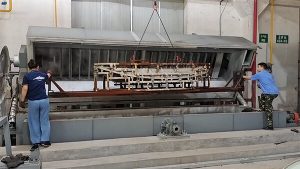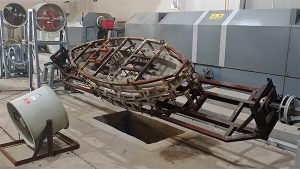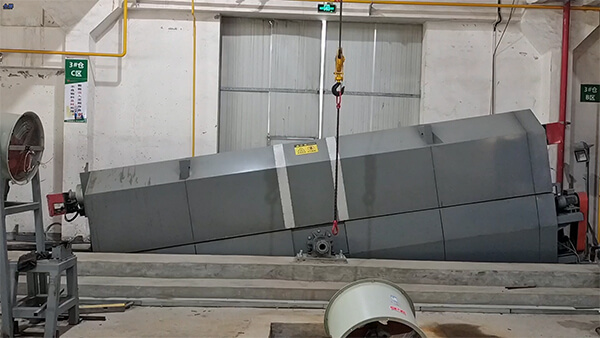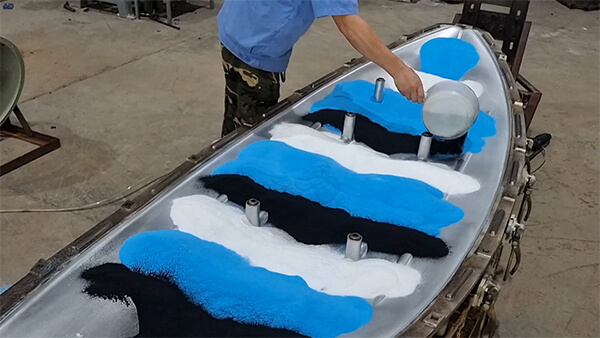When it comes to manufacturing kayaks, there are a few methods that are used. In this blog post, we will be focusing on the rotomolding process of kayak manufacturing.
This process is popular because it produces high-quality kayaks while keeping costs low. Keep reading to learn more about rotomolding and how it is used in the manufacturing of kayaks!
What Is Rotomolding And How Kayaks Are Made With This Process?
Rotomolding is a type of plastic molding that uses heat and pressure to form products from pellets of thermoplastic resin. The process begins with the resin being placed in a metal mold, which is then heated in an oven until the plastic becomes soft enough to mold.


The mold is then rotated slowly while it is cooled so that the plastic evenly coats the inside of the mold. Once the plastic has cooled and set, the mold is opened and the product is ejected. Rotomolding is often used to create kayaks, as it allows for kayaks with a smooth, seamless hull.
The process is also relatively inexpensive and efficient, making it a popular choice for mass production. On the downside, rotomolding can only be used to create products with a limited number of parts, as the mold cannot be opened until the product has cooled and set.
The Benefits Of Rotomolded Kayaks!
Rotomolded kayaks are quickly becoming the preferred choice for serious kayakers. Unlike traditional kayaks, which are made from multiple pieces of material glued together, rotomolded kayaks are made from a single piece of plastic.
This construction method gives rotomolded kayaks several advantages.
- First, they are much more durable than traditional kayaks.
- Second, they are easier to repair if they are damaged. Third, they are lighter and easier to transport.
- Finally, rotomolded kayaks have a sleek, modern look that traditional kayaks cannot match. For all these reasons, it is easy to see why rotomolded kayaks are the wave of the future.
Different Types Of Kayaks That Can Be Made Through Rotomolding!
Rotomolding is a type of plastic molding that can be used to create a variety of kayaks. The rotomolding process involves using heat and pressure to mold plastic into the desired shape.
This type of kayak is often made from polyethylene, which is a durable and lightweight material. Rotomolded kayaks are often cheaper than other types of kayaks, and they are also easy to transport and store.
Some popular types of rotomolded kayaks include sit-on-top kayaks, tandem kayaks, and fishing kayaks.
- Sit-on-top kayaks are stable and easy to maneuver, making them a great option for beginners.
- Tandem kayaks are perfect for couples or families who want to paddle together.
- Fishing kayaks are outfitted with features like rod holders and storage compartments, making them ideal for anglers.
No matter what your needs are, there is sure to be a rotomolded kayak that is perfect for you!
How The Color And Design Is Added To The Kayak During Manufacturing?
The kayak is a lean and means water machine that has been around for centuries, originally used by the Inuit people of the Arctic region. Today, kayaks are popular with adventurers and casual weekend paddlers alike.
But how do the color and design get added to the kayak during manufacturing? The process begins with a mold that is injected with polyethylene plastic pellets. The pellets are melted and then injected into the mold under high pressure.
Once the plastic has cooled and solidified, the mold is opened and the kayak is removed. Next, a UV-resistant gel coat is sprayed onto the kayak to protect it from sun damage. Finally, a decal or graphic is applied to give the kayak its distinctive look.
Thanks to this process, kayaks can be manufactured in a wide range of colors and designs to suit every taste. It’s no wonder that kayaks are one of the most popular types of boats on the market today!
Some Common Issues With Rotomolded Kayaks and How They’re Addressed?
Rotomolded kayaks are a popular choice for serious kayakers because they’re durable and designed to withstand challenging conditions. However, there are a few common issues that can arise with rotomolded kayaks.
- One issue is that the kayak can become misshapen if it’s exposed to excessive heat. This can cause the hull to lose its integrity and may make the kayak difficult to paddle.
- Another issue is that the rotomolding process can leave tiny imperfections in the hull, which can create weak spots that are susceptible to leaking.
To address these issues, kayak manufacturers often use a multi-layer construction method, which helps to prevent excessive heat damage and ensures that the hull is watertight.
By taking these steps, manufacturers can help to ensure that rotomolded kayaks provide years of trouble-free performance.
The Future Of Rotomolded Kayaks!
Rotomolded kayaks are made from a process that involves heating plastic pellets and then molding them into the desired shape. This process is relatively new, and it offers several advantages over traditional kayak manufacturing methods.
For example, rotomolded kayaks are much lighter and more durable than their composite counterparts. In addition, they are easier to produce, which means that they can be made much more cheaply.
As a result, rotomolded kayaks are becoming increasingly popular with both amateur and professional kayakers.
Looking to the future, it is likely that rotomolded kayaks will continue to grow in popularity, due to their many advantages. Manufacturers are likely to continue to explore new ways to make use of this versatile manufacturing technique.
Conclusion
The rotomolding process of kayak manufacturing is an interesting one that yields a durable and sturdy final product. It’s definitely something to consider if you’re in the market for a new kayak, especially given how affordable they are these days. Thanks for reading!





